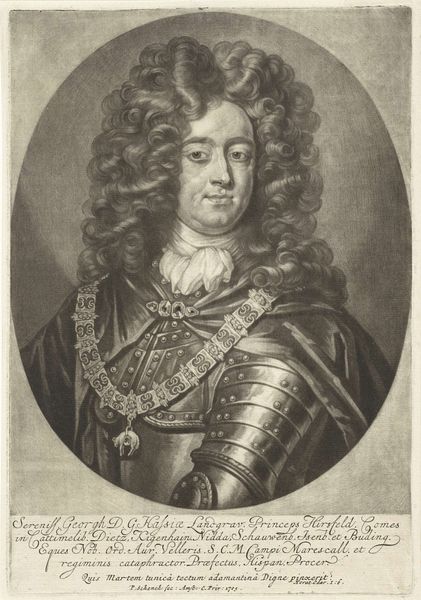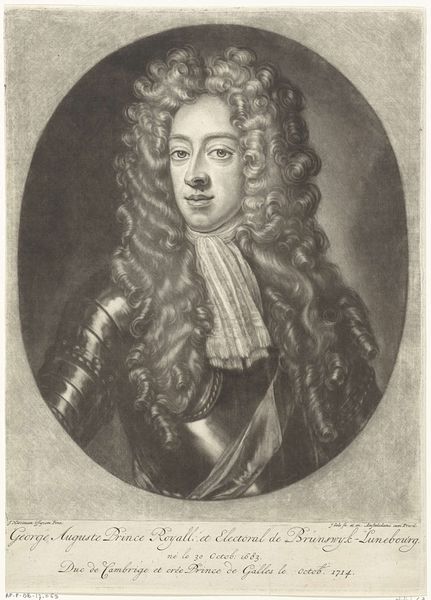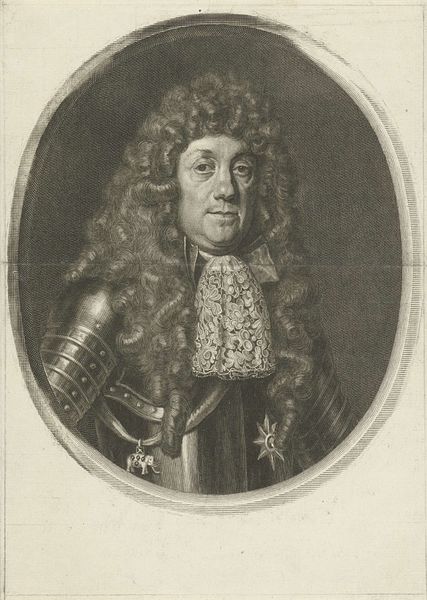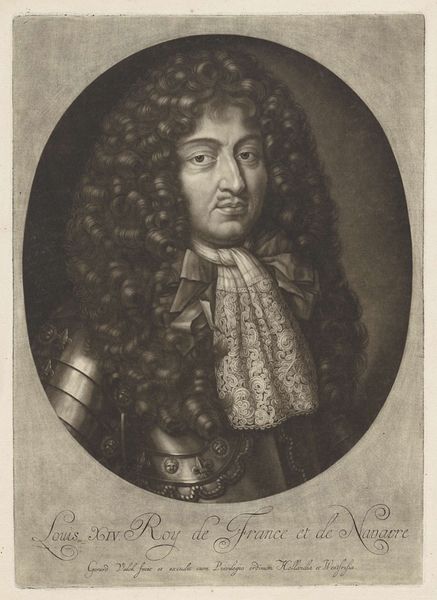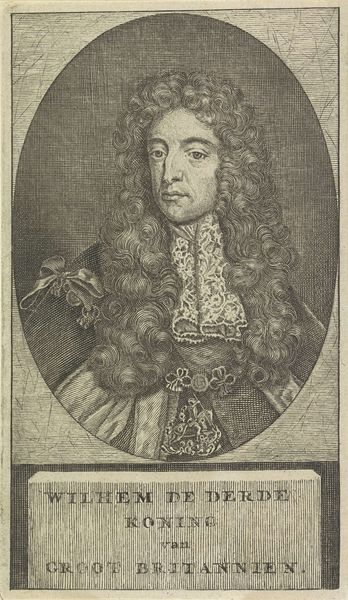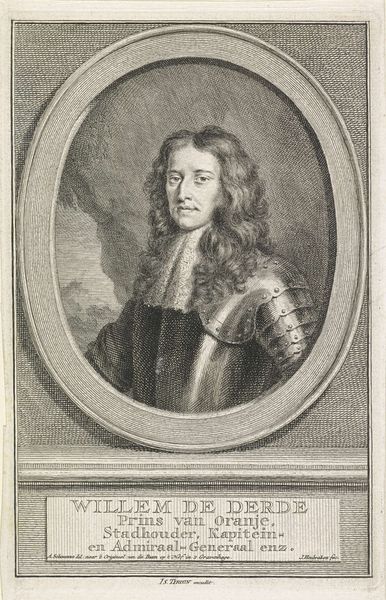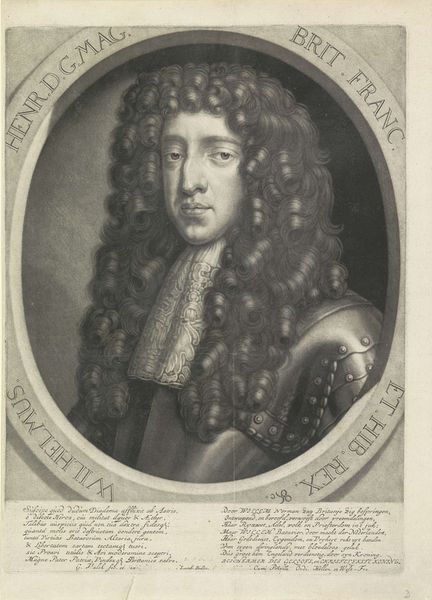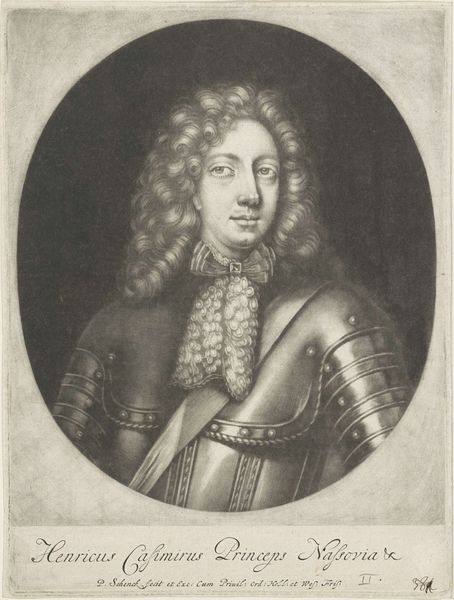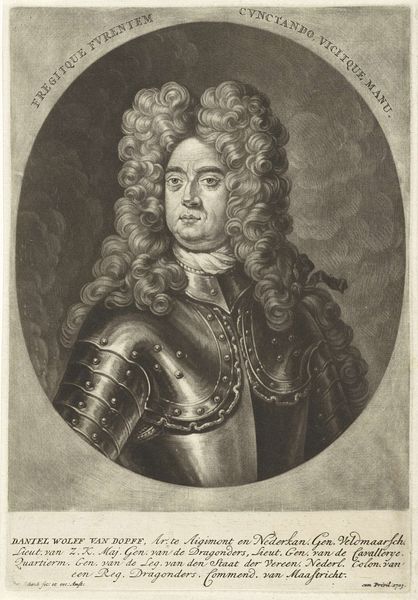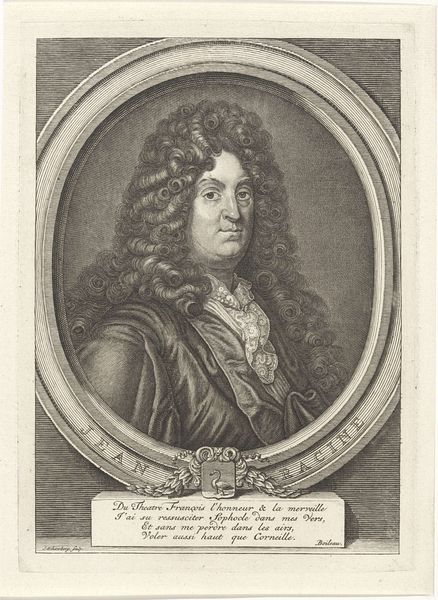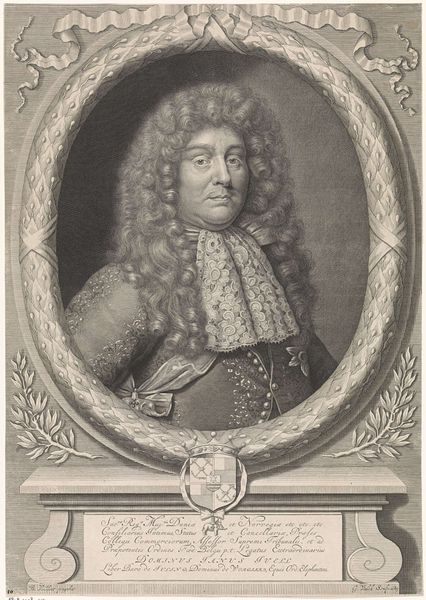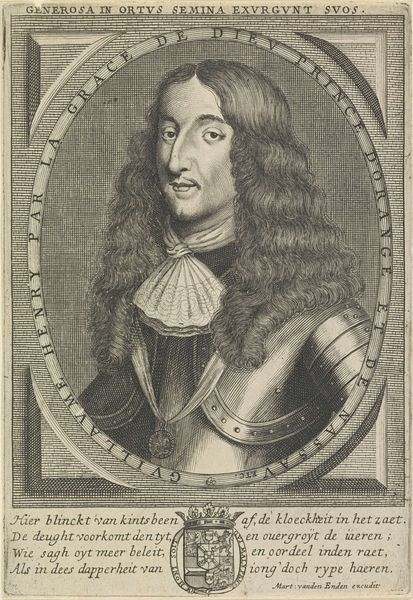
drawing, engraving
#
portrait
#
drawing
#
baroque
#
portrait image
#
charcoal drawing
#
figuration
#
charcoal art
#
portrait reference
#
line
#
portrait drawing
#
history-painting
#
engraving
#
portrait art
#
fine art portrait
Dimensions: height 349 mm, width 255 mm
Copyright: Rijks Museum: Open Domain
Curator: Immediately, the tonal range impresses me. The light seems caught and diffused exquisitely across the plane. Editor: This is a Baroque portrait of Lodewijk, Margrave of Brandenburg, dating from around 1662 to 1726, currently held in the Rijksmuseum. The work is attributed to Gerard Valck and created using engraving. I find the presentation fascinating, considering the political milieu. Curator: Yes, and notice how the oval frame, the locus of presentation, contains this noble subject. The engraving showcases such refined textures – especially in the rendering of hair, lace, and armor. It almost transcends the medium, mimicking the lusciousness of paint. What semiotic play do you see within the cultural symbols included? Editor: Considering Lodewijk's lineage and role, I see it firmly positioning him within a tradition of power and legitimacy. Baroque portraiture during this time acted almost like a piece of political propaganda. The very act of commissioning and displaying such a portrait communicated specific messages to the aristocracy and general populace alike regarding status, inheritance and divine right. It underscores the importance placed on lineage during this era. Curator: True. We have the explicit markers of status alongside the careful modulation of light and shadow. It all conspires to elevate the subject, creating an idealized version of nobility, that serves a narrative function in his court. The intricate interplay of line work, creating that subtle gradient, adds dynamism to the relatively simple composition. Editor: These depictions provided visual affirmation, so that he embodied and projected an image of power, wealth, and sophistication. A very carefully controlled and constructed self-representation for consumption by his court and rivals. The portrait wasn't simply representational, but performative. Curator: A superb example of form following socio-political function, mirroring power structures in both aesthetic and symbolic language. I came with an appreciation for Valck’s technique, and leave with more insight on cultural narratives within. Editor: Absolutely; by seeing this not just as an image but also as an instrument within political theatre, we can hopefully appreciate not just art itself, but also how images wielded cultural authority.
Comments
No comments
Be the first to comment and join the conversation on the ultimate creative platform.

